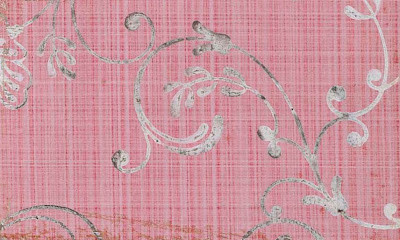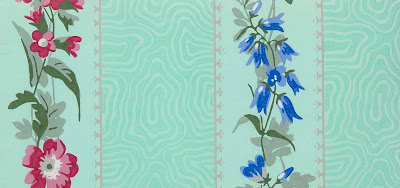Illustration: Matthew Digby Wyatt. Stucco detail from Sala del Tribunal, Alhambra, 1872.
In 1872 the English architect, designer and critic Matthew Digby Wyatt published An Architect's Note-Book in Spain Principally Illustrating the Domestic Architecture of That Country. It covered an extensive journey that Digby Wyatt had made to Spain in 1869. He had never been to Spain before, but he was obviously intrigued and duly came back with many personally drawn sketches, one hundred of which were added to the book. In many respects, the published book of 1872, contains only brief text descriptions, which duly accompany the illustrative plates. Perhaps the author thought that the architectural heritage of Spain should largely speak for itself, or perhaps he felt that by 1872 enough had been said about the architecture of Spain and so he needed to add very little as an extra.
Digby Wyatt's tour was extensive and relatively intense. He visited most, if not all of the cities and regions of Spain, including Granada from which the four examples that illustrate this article were produced. Although some of his sketches tend towards the vague, it is perhaps his close up illustration work of details found at the Alhambra that are the most interesting and informative.
Illustration: Matthew Digby Wyatt. Stucco detail from the Hall of the Ambassadors, Alhambra, 1872.
Digby Wyatt was obviously intrigued, both intellectually and creatively, by the decorative work that had been produced across the whole Alhambra complex and paid due respect to the Islamic craftsmen involved in the task of internal decoration that took generations to achieve. Interestingly, he often either quoted or guided his readers towards Owen Jones and his 1856 publication The Grammar of Ornament. This particular book had keenly championed both the Alhambra complex and Islamic decoration in general, particularly that work which centred around the Islamic culture of Southern Spain and North Africa.
Digby Wyatt and Owen Jones were close friends and both shared a passion for the broader history of the decorative arts that spread much farther than the often more familiar but narrower confines of Europe. Digby Wyatt contributed the text towards two of Jones chapters in The Grammar of Ornament, as well as being involved in a number of Jones projects including the reassembly of the Crystal Palace after its dismantling at the end of the Great Exhibition in 1851. Digby Wyatt produced three of the popular guides, the Byzantine and Romanesque court, Medieval court and Italian court for the new Crystal palace complex at Sydenham. It seems only fitting therefore that Digby Wyatt dedicate the book concerning his extensive sojourn in Spain to his friend Owen Jones.
'My dear Owen,
The last book I wrote I dedicated to my brother by blood; the present I dedicate to you - my brother in art. Let it be a record of the value I set upon all you have taught me, and upon your true friendship.
Ever yours M. Digby Wyatt.'
It was a very generous and selfless dedication by a man who had every right to be proud of his own achievements but was more than happy to demure to the knowledge accrued by his friend and colleague Owen Jones. Unfortunately, two years later Jones died at the relatively early age of sixty-five. That Digby Wyatt himself was to die three years later at only fifty-six is all the more tragic. These two individuals were key elements in both the design reform movement, but also in the much more scholarly pursuit of the advancement of knowledge concerning the extensive history of the decorative arts.
Illustration: Matthew Digby Wyatt. Mosaic from the Hall of the Ambassadors, Alhambra, 1872.
By trying to understand and through that extend their own personal acknowledgement of the achievement of complexes such as the Alhambra, Jones and Digby Wyatt helped to make Islamic decoration in Europe an informed and much more accessible subject to both study and admire.
One of Digby Wyatt's particular aims in visiting Spain was to try to record what he saw as the fast disappearing architectural heritage of a uniquely creative region of Europe. Through revolution, neglectful indifference and sometimes deliberate vandalism, the often complex and intertwined history of Christian and Islamic Spain was surrendering to the modern world of the later nineteenth century. Many books such as Digby Wyatt's An Architects Note-Book in Spain were not necessarily published by strident conservationists who wished to see the protection of architectural heritage in all regions of the world, but more a case of records or glimpses of the surviving elements of a shared cultural heritage that was swiftly passing into oblivion.
Illustration: Matthew Digby Wyatt. Detail of glass inlay from the Hall of the Ambassadors, Alhambra, 1872.
Many in the nineteenth century saw much of what the general public assumed as fixed and intransigent aspects of the landscape, as in fact vulnerable and dangerously transient. Industrial Europe was fast engulfing areas within industrial and city landscapes, demolishing generations of architectural heritage often in a matter of a few years. That much was irrevocably demolished with the often enthusiastic consent of local authorities and centralised governments, was all the more distressing for those interested in any form of historical concept. That such writers as Digby Wyatt would not recognise much of England today, let alone Spain says much about government collusion with the less than tangible ideal of industrial, rather than creative progress.
Further reading links:
Matthew Digby Wyatt: The First Cambridge Slade Professor of Fine Art: An Inaugural Lecture
Fine Art; A Sketch of Its History, Theory, Practice, and Application to Industry
The Italian Court in the Crystal Palace (Crystal Palace Library Guides)
***RE-PRINT*** The history, theory, and practice of illuminating
The Byzantine and Romanesque Court in the Crystal Palace, Described by M.D. Wyatt and J.B. Waring
The Mediaeval Court In The Crystal Palace (1854)
Notices Of Sculpture In Ivory: Consisting Of A Lecture On The History, Methods, And Chief Productions Of The Art (1856)
**REPRINT** An architect's note-book in Spain : principally illustrating the domestic architecture of that country ... with one hundred of the author's sketches, reproduced by the auto-type mechanical process
Alhambra
The Alhambra (Wonders of the World (Harvard University Press))
ALHAMBRA OF GRANADA
The Alhambra








